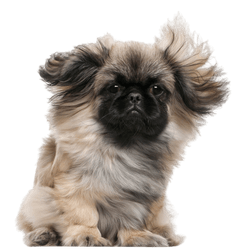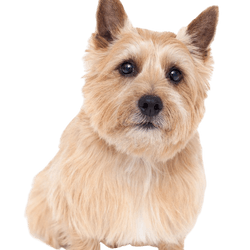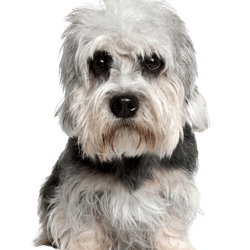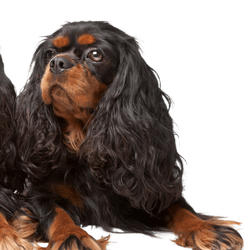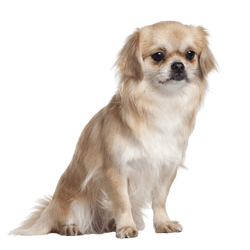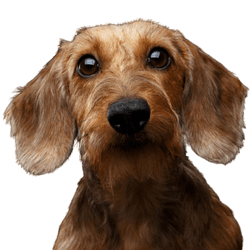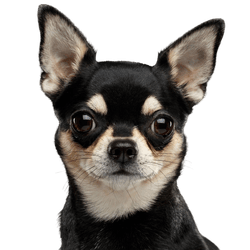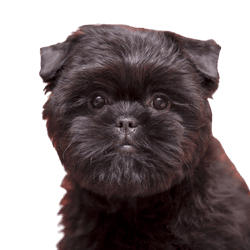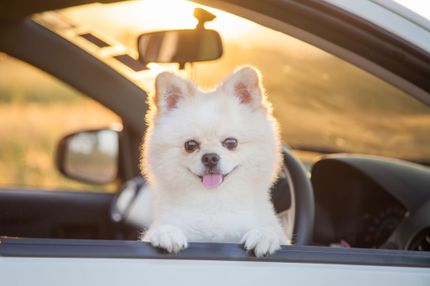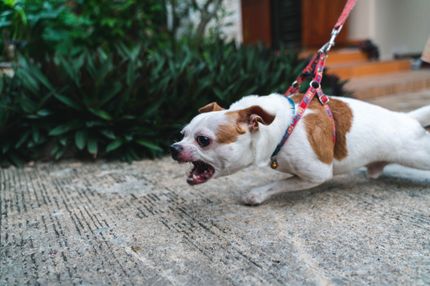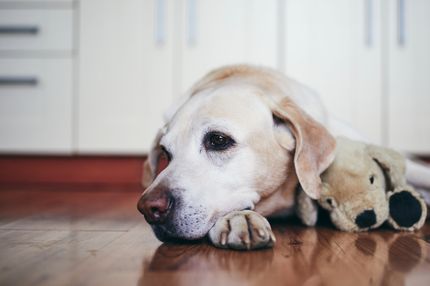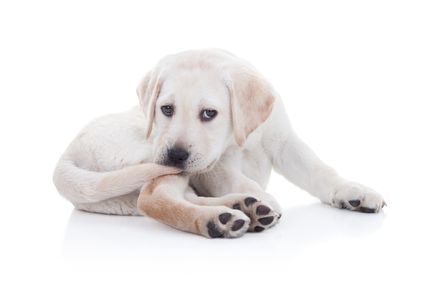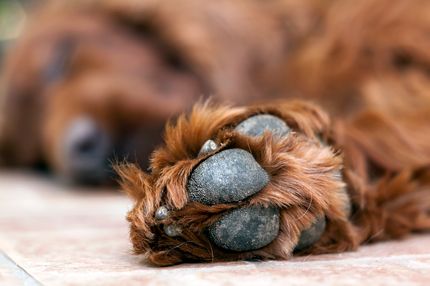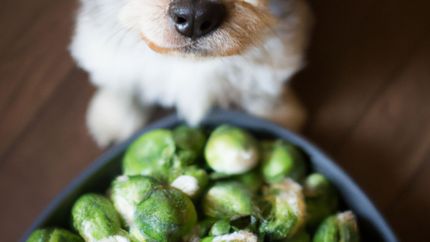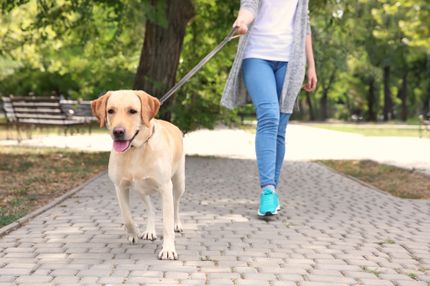Facts & Origin
Origin and history of the Bolonka Zwetna
This dog breed is not recognized by the FCI, but by the RKF and VDH. The "Russkaya Tsvetnaya Bolonka", translated as "Russian colored Bichon", is also often simply called Bolonka Zwetna in Germany.
The ancestor of the Bolonka Zwetna is thought to be the Bolonka Franzuska with its white coat, which was used as a gun dog by the French and Russian nobility as early as the Renaissance. According to tradition, even the famous Empress of Russia "Catherine the Great" was a lover of the little animals. While she ruled at the Romanov tsar's court, some small dogs accompanied her. It is also known from unconfirmed sources that King Louis IV once presented one of the white four-legged friends as a gift to a Russian tsar.
Other conjectures suggest that Napoleon's army brought the ancestors of the Bolonka Zwetna to Russia. After World War II, the population of the Bolonka Franzuska had greatly dwindled, so breeders began to crossbreed other small breeds such as the Lhasa Apso, the Bolognese, the Shih Tzu, and the Pekingese. In 1966, the first standard was recognized in Russia, but at the international dog association FCI, the Bolonka Zwetna is not registered as an independent breed.
Suitability and attitude
The Bolonka Zwetna is, as its name suggests, a typical "lap dog" and therefore a good companion dog. If given enough attention and exercise, it can also do well with seniors, novice dogs, and a city apartment.
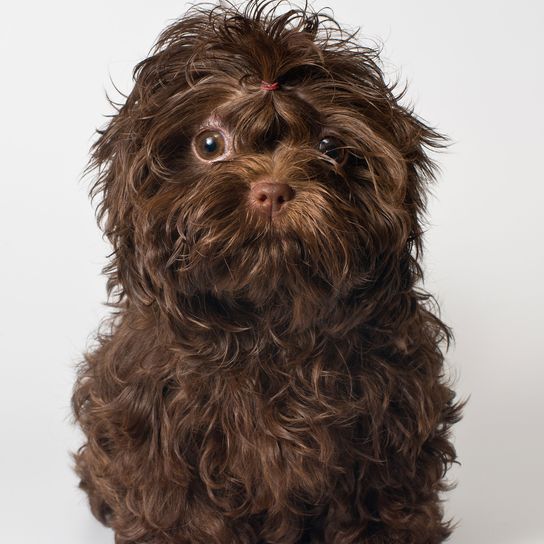
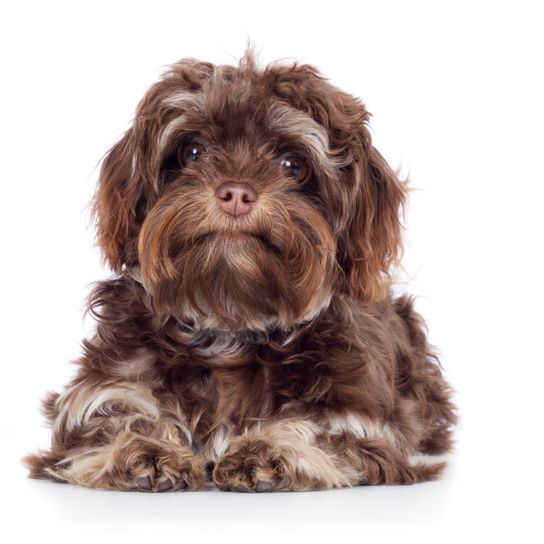
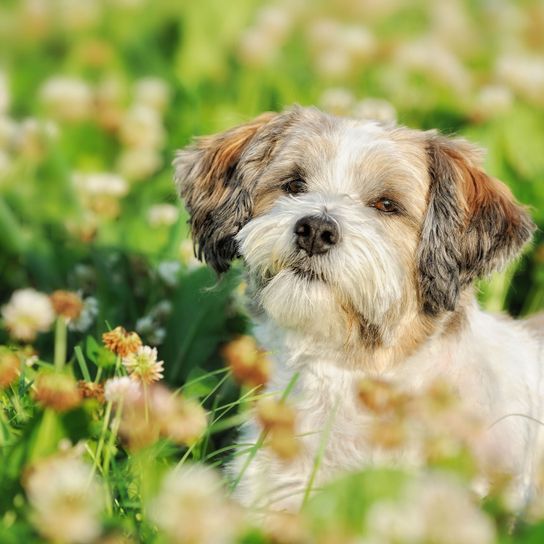
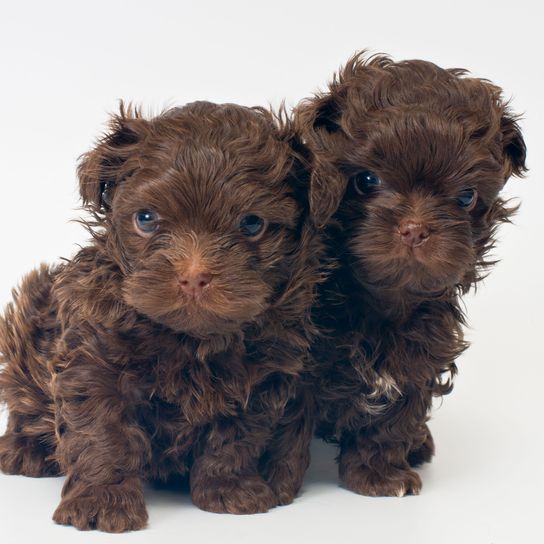
| Alternate Name | Russkaya Tsvetnaya Bolonka, Bolonka Zwetna (National Breed) |
| Origin | Russia |
| Life expectancy | 10 - 15 years |
| Care requirements | high-maintenance |
| Activity level | average |
| FCI group | not recognised |
| AKC group | not recognised |
| KC group | not recognised |
Bolonka Zwetna mixes
Attitude, character and temperament of the breed
Typical character traits of the Bolonka Zwetna
The name Bolonka Zwetna comes from Russian and means something like "colorful lap dog". This is exactly what your four-legged friend loves to do: namely, to cuddle with his humans. He is very affectionate and in need of love. A Bolonka Zwetna bonds closely with its owners and is fixated on its caregivers. If you want to buy a Bolonka Zwetna, it is better to find out beforehand whether you can take the animal to work with you - it does not like to stay at home alone.
You won't have any problems with your colleagues, because the lovable Bolonka Zwetna will surely take the hearts of all employees by storm. He does not need much space and adapts to your living conditions: In a city apartment he feels just as comfortable as in the countryside, the main thing is that he can be with you. Since he is neither yappy nor aggressive, he is a perfect companion in all situations. Even if you already have other pets like a cat, the Bolonka Zwetna will integrate well.
Character
Usage
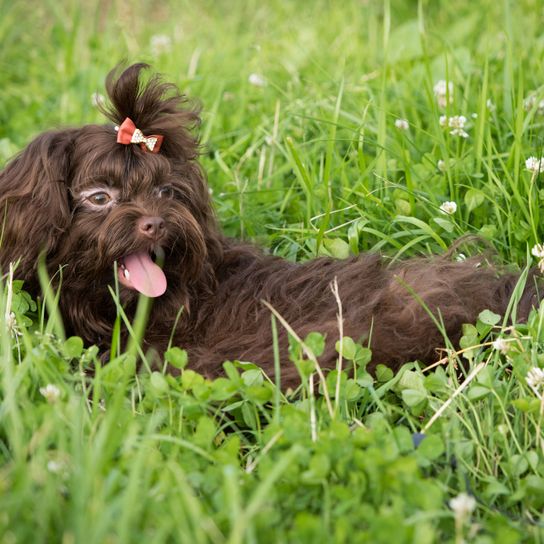
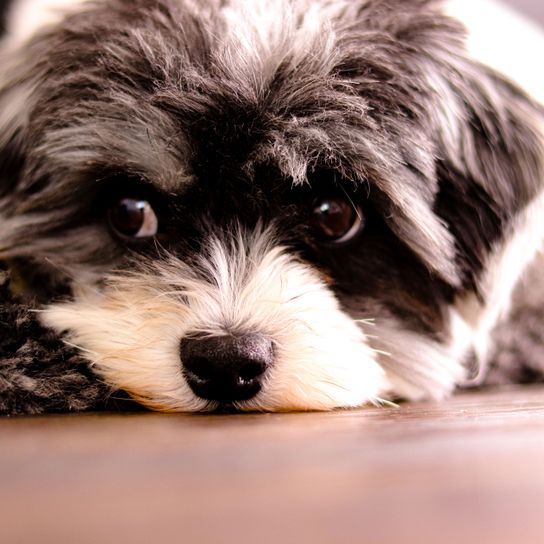
Typical breed diseases of the Bolonka Zwetna
Even if your Bolonka Zwetna is begging you with his cute googly eyes, you should not give him too many treats. The small and light dog does not need much food. Every kilogram too much will have a negative effect. In the past, the following genetic diseases have been observed in the breed:
- Hip joint dysplasia
- Progressive retina atrophy
- Patella luxation
- Cataract
In addition, the Bolonka Zwetna is prone to tartar: it is therefore worthwhile to check the small teeth regularly and clean them gently if necessary.
Life expectancy
The small dog will live to be about 15 years old. This is not unusual: small dog breeds tend to grow older than larger dog breeds.
Bolonka Zwetna breeding and purchase
This dog breed is very rare in our area. Bolonka Zwetna puppies from a reputable breeder are free of hereditary diseases and are delivered healthy to their new owners. Because of the tendency to eye diseases, you should take a close look at the parents during the first visit to the breeder.

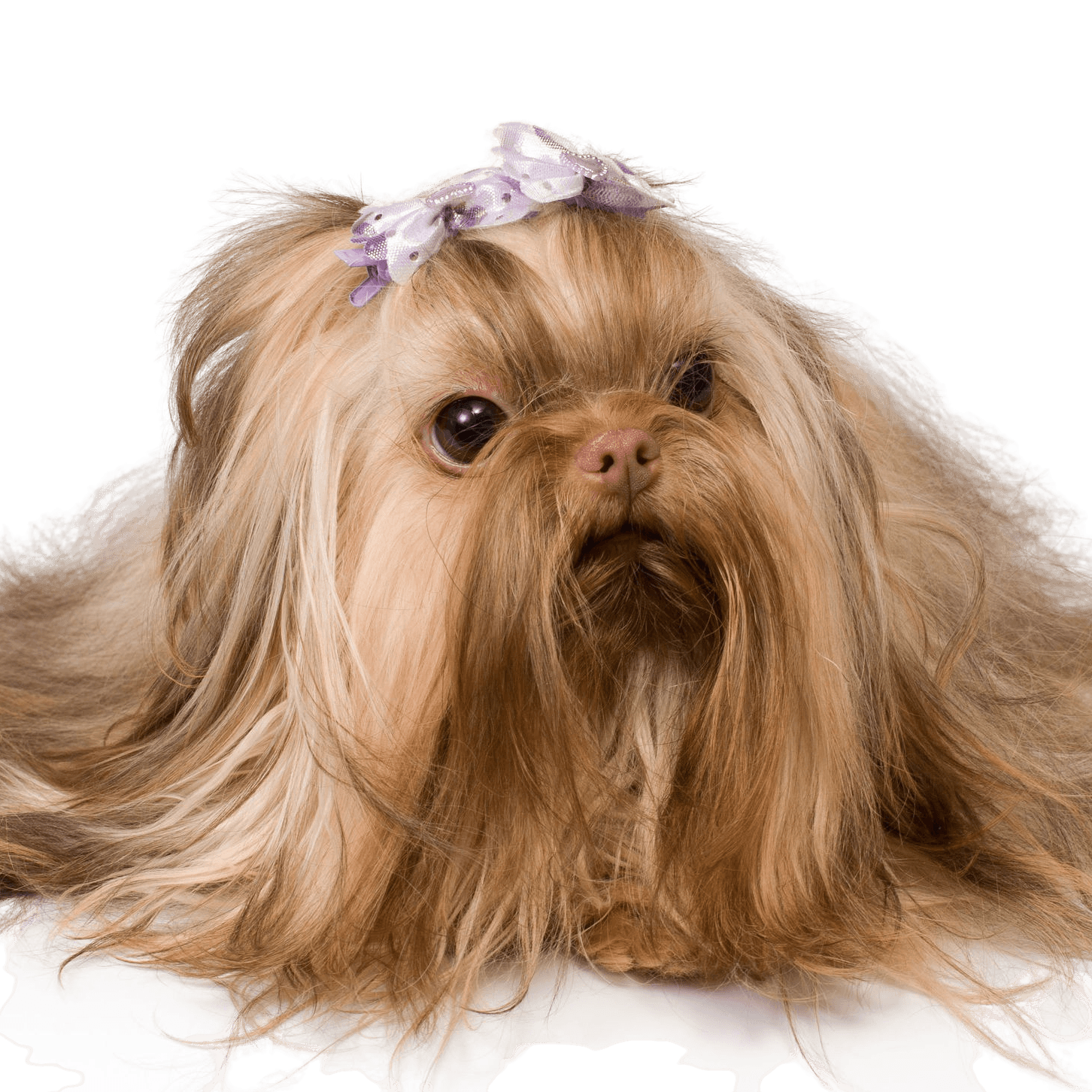
Breed characteristics of the Bolonka Zwetna
The Bolonka Zwetna is not recognized by the FCI. Consequently, the KF standard of 15/05/2019, translated by Annette Bonnefoux, is described here.
However, efforts are made to classify it as group 9 (companion and companion dogs). This small dog breed is said to reach a height of up to 26 cm and a weight of 3-4kg. Despite their size, they move light-footed and freely. Their characteristic gait is a fast trot.
The head
The head of this dog breed fits harmoniously in relation to the overall appearance. The top of the head is rounded, slightly arched and the occiput is weak, the eyebrow arches moderately pronounced. The stop is short but pronounced, the cheeks are slightly rounded.
The muzzle
Bolonka Zwetnas have a small nose which is either black or colored to match the coat color with well opened nostrils. The muzzle itself is not long, only slightly more than 1/3 of the head and runs dry towards the nose slightly pointed. The bridge of the nose is straight and broad at the base.
The lips are dry, close fitting and the edge of the lips should be black or colored according to the coat color. Upper and lower jaws are fairly broad, with a scissor bite desirable. However, a pincer bite and a slight forward bite are tolerated according to the breed standard. Teeth should be generally white and strong, incisors vertical in the jaw. It is also desirable that all incisors and canines be complete.
The Eyes & Ears
This breed of dog has medium sized, roundish, dark eyes that are set straight. Lighter eyes are acceptable in brown colored dogs. The eyelids are narrow, tight fitting and tight with black or eyelid rims corresponding to the coat color. The expression should be gentle and friendly.
The medium sized, triangular ears with slightly rounded tips are pendulous at the cartilage and set moderately high with abundant, long hangings.
The rump
The neck of the Bolonka Zwetna should be of medium length, set high, dry and well muscled. It continues into a compact and moderately broad body, the upper profile line of which should be slightly sloping but straight from the moderately pronounced withers over the straight, strong, long and broad back to the base of the tail. The loins are thus short, broad and slightly arched, the rounded croup moderately long, broad, muscular but slightly sloping.
The brisket of a breed specimen is moderately broad, oval in longitudinal section and long with a progression to the elbows. The lower profile line should be slightly tucked up.
The tail
The fully furnished tail is of medium length, set high and carried in an arch over or lying on the back. The tip of the tail touches the body.
The limbs
When viewed from the front, the forequarters stand as the hindquarters do when viewed from the rear: straight and parallel, but slightly apart. The well muscled shoulder is sloping, resulting in a shoulder angle of 100° to 110°. The upper arm is of the same length as the shoulder blade and the elbow is strictly backward. The forearm, of medium length, is parallel and straight, allowing the metacarpus to be in line with it. The pasterns are strong, not long, and also stand almost vertical.
The thigh, of medium length, is well muscled and continues into a moderately angulated stifle joint and a medium length lower thigh. The dry, strong hock joint is of medium length with pronounced articulation angles.
The front feet should be small, round, arched and closed, with the hind feet being slightly smaller and oval but equally arched and closed desired.
The coat
The thin, elastic skin of the Bolonka Zwetna does not wrinkle and is pigmented throughout. It is covered with long, dense hair of medium length and density, forming uniformly long, large curls or waves. The undercoat, on the other hand, is moderate or even absent. According to the breed standard, the hair is not trimmed or shaped with the exception of the paws, whose contours are trimmed. Long hair on the forehead, however, can be gathered with a clip if it covers the eyes.
Color-wise, this dog breed can be found in every color except pure white, mottled, brindle and merle. Small (inconspicuous) white markings on chin, neck, chest or toes are permissible.
| Fur length | medium |
| Fur | curly |
| Ear shape | Floppy Ear |
| Tail | short |
| Anatomy | rugged |
| Size ♀ | 22 - 26 cm |
| Weight ♀ | 3 - 4 kg |
| Size ♂ | 24 - 26 cm |
| Weight ♂ | 3 - 4 kg |
| Suitable For | Children |
Colors
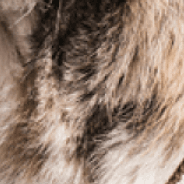



FAQ
-
No, the Bolonka Zwetna is not a barker and is considered an ideal, calm and sensitive comrade in the family and for children.
-
A Bolonka Zwetna puppy is very expensive and can cost 3000 euros. There are mixed breeds and animals from animal welfare, which are much cheaper. In addition, you can allow a dog the second chance to a "FOR-IMMER-HOME".
-
On average, a Bolonka dog should be out about 2 hours per day. However, due to his active nature, he will not complain if it is more.
-
Bolonka Zwetna means "colorful lap dog".
-
Bolonka Zwetna live up to 15 years on average.
-
No, the Bolonka Zwetna is not recognized by the FCI.
-
Russia - the country of origin of the Tsvetnaya Bolonka - is in the process of developing the breed and is working towards meeting the necessary requirements for the breed to receive its provisional FCI recognition.
-
A Bolonka Zwetna usually reaches a shoulder height of 20-30 cm and a weight of 3-6 kg.
-
Bolonka Zwetna is a small dog breed that originated in Russia. This breed is characterized by its friendly and affectionate nature.
-
The Bolonka Zwetna is an intelligent animal that is willing to learn and responds well to positive reinforcement. It is important that training is gentle and friendly from the beginning to encourage a positive relationship between owner and dog.








